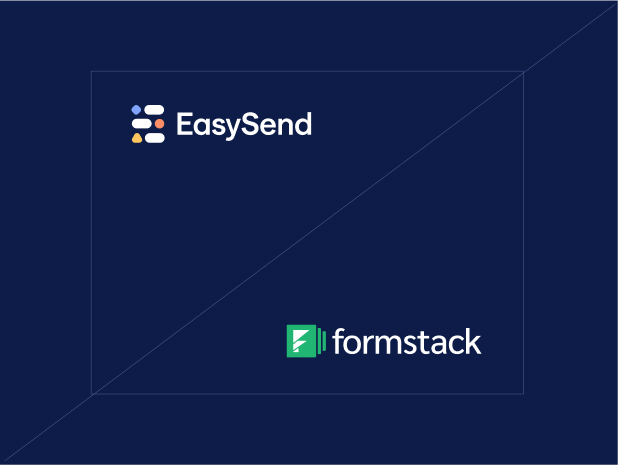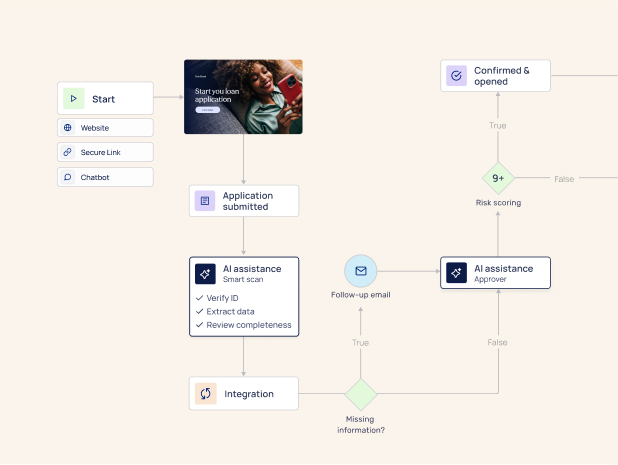Legacy systems are the lifeblood of many organizations in insurance, banking, and financial services. CRMs like Salesforce, core policy administration systems, and BPM tools run the back office, but they weren't built to handle dynamic, customer-facing processes. And as customer expectations for digital convenience continue to rise, that gap between core systems and the actual customer experience is costing organizations time, money, and trust.
It's time to rethink the "last mile" of your digital workflows.
The Problem: Core Systems Were Never Meant to Handle CX
Most enterprise systems were designed with one goal: managing internal data and processes. They excel at:
- Storing structured records
- Managing approvals and operations
- Standardizing back-office functions
But when it comes to customer-facing journeys, they fall short:
- No built-in conditional logic to adapt to customer input
- No native multi-party workflows
- No support for omni-channel distribution (email, SMS, web portals)
- No real-time feedback loops
So even if you automate the back-end, the front-end often defaults to PDFs, emails, and call centers—leading to friction, delays, and drop-off.
The Hidden Cost of the Last-Mile Gap
This disconnect between internal systems and external interactions introduces serious business risks:
- High abandonment rates during onboarding or claims
- Manual errors due to duplicate data entry
- Compliance gaps from missed documentation or signatures
- Overloaded support teams handling repetitive follow-ups
- Fragmented data flowing into your CRM or core system
Organizations end up stitching together point solutions, email threads, and outdated forms—just to move data from customers to core platforms.

Enter the Dynamic Interaction Layer
What’s missing is a purpose-built layer between your systems and your customers: a dynamic customer interaction engine.
A Dynamic Interaction Layer sits on top of your tech stack and:
- Guides customers through digital journeys with logic and validations
- Supports multi-party workflows (e.g., agents, clients, managers)
- Syncs data in real time with CRMs, policy systems, and document repositories
- Replaces PDFs and emails with structured, adaptive interfaces
This isn’t a form builder. It’s a flexible, low-code interface engine that allows you to:
- Prefill data from your systems
- Validate fields before submission
- Handle complex workflows across teams and customers
- Route approvals, signatures, and uploads dynamically
Real-World Example: Onboarding Reimagined
A leading financial services firm used to send 12 different PDF versions for onboarding depending on account type, region, and partner role. Each onboarding required 7–8 emails, manual signature collection, and back-and-forth for missing documents.
By replacing it with a dynamic interaction layer:
- All 12 PDFs were replaced with one dynamic digital journey
- Signatures, uploads, and logic were handled in one flow
- Email touchpoints dropped from 7+ to 0
- Onboarding time was cut by 70%
What to Look for in a Platform
Not all solutions are built for this level of complexity. Look for:
- Low-code configurability with robust logic and condition handling
- Deep CRM/core system integration (Salesforce, Guidewire, core banking)
- Support for multi-stakeholder collaboration and workflows
- Document handling and eSignatures, built-in
- Enterprise security and compliance standards
Final Thoughts
Digital transformation doesn't end at automating internal workflows. It must extend all the way to the customer—seamlessly, intelligently, and at scale.
A dynamic interaction layer bridges the last mile, unlocking:
- Faster onboarding and claims
- Higher conversion and satisfaction
- Real-time, validated data intake
- Compliance without compromise
EasySend is built for this exact need. It connects your existing systems with modern, adaptive digital experiences—without relying on dev-heavy projects or rigid templates.
If you're still relying on PDFs, emails, or generic forms to bridge this gap, it's time to rethink your customer interaction strategy.





